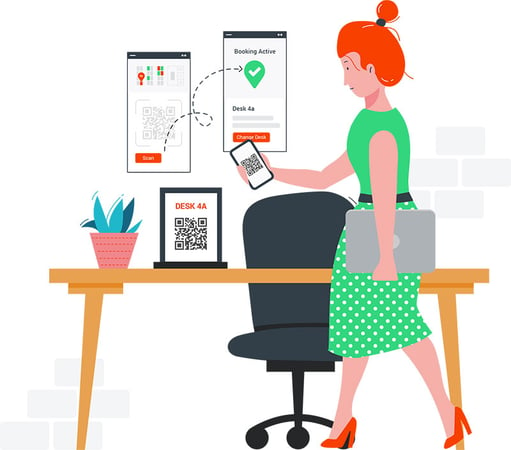How to Measure and Increase the Efficiency of Your Business

Did you know that inefficiencies cost businesses a staggering percentage of revenue annually? Not only that, but inefficiency can also be a massive drain on resources. Asana’s Anatomy of Work Index report states that “work about work” takes up around 60% of employees’ time and, only 27% of the workday is devoted to the actual tasks they were hired for.
Deloitte reports that an average of 25% to 40% cost savings can be achieved by implementing intelligent solutions designed to streamline operations and increase efficiency.
Based on this information, it comes as no surprise that businesses have shaped their priorities around enhancing operational efficiency, digital transformation of business processes, and improving employees’ digital experience at work as shown below:
Could your business benefit from some more streamlined solutions? Let’s take a look at some ways to measure and improve efficiency— we'll start by looking at the most common efficiency issues businesses experience.
What are the common efficiency-related struggles businesses face?
Efficiency problems must be identified and resolved in order for businesses to maximize productivity. We've outlined some common issues below, do any of these sound familiar to you?
Outdated systems:
Using out-of-date technology in the workplace costs far more than headaches for your staff and unnecessary stress.
According to Sharp research, the average employee wastes almost 40 minutes per day thanks to inefficient and slow technology in UK offices. This equates to 167 hours, or 21 days, per year. Failing to adopt new technological solutions costs employers more than £2,100 per employee annually.
In addition to this, older, less secure systems are more vulnerable to cyberattacks than newer, more secure ones. Even a one-time security breach can harm a company's brand, and the resulting losses can significantly affect its financial position.
A lack of training:
It's not a surprise that there is a direct correlation between employee training and performance. When employees are trained how to do their tasks according to industry standards, they better contribute to your company's success. However, this ResearchGate study suggests companies tend to under invest in staff training.
For example, new employees are often expected to learn on the job from their superiors and senior co-workers rather than through specific instruction. This form of training often proves insufficient (have you ever heard "this isn't how we're supposed to do it, but it's how I do it") and can harm the company's bottom line in the long term.
An environment that doesn't encourage productivity
Employee health, happiness, and productivity are all affected by various elements in the workplace, such as lighting, atmosphere, and even relationships. Think about what it's like to work in your current environment while considering the following:
Ergonomic factors: An ergonomic environment is one designed for efficiency and comfort, enabling employees to work faster, make fewer errors, and be more energetic. Tools and furniture that support comfort and productivity naturally lead to better output, as do things like proper lighting and adequate air circulation.
Psychological factors: Workplace culture plays a vital role in every employee’s mental health. Modern workspaces need areas where workers can limit physical interactions and interruptions, and other spaces where they can collaborate. Distractions and clutter should be eliminated. Additionally, a workplace culture designed around mutual respect and consideration helps ensure that personal differences don't have a negative effect.
How can you measure efficiency?
Measuring workplace efficiency can help identify the best way to manage resources and reduce costs. Apply the following methods to measure your business efficiency:
Use data
Data collection and analysis help your business become more efficient by providing valuable insights into whether processes and workflows are effective.
 Photo by Jason Briscoe on Unsplash
Photo by Jason Briscoe on Unsplash
Look at output rather than hours worked
Employers are beginning to understand that hours worked are not necessarily a good measure of productivity and effectiveness.
The typical American worker puts in 40 hours a week, or 8 hours a day, five days a week, on the job—but employees are expressing a strong preference for more flexible working arrangements. Hybrid and remote work arrangements can be more effective for some staff, and happier employees are more likely to engage with workplace goals and objectives.
Re-assess your current systems against your goals
For more effective goal management, assess your various work systems that affect productivity and make changes as necessary.
3 ways to increase your business efficiency
When it comes to efficiency, sometimes it’s hard to see the forest through the trees—but even small steps can make a world of difference. Below are a few ways to up your workplace efficiency:
1. Remove the things that don't add value to the business
To boost efficiency, consider your operations and identify the things that don't add value. Things like paper management, waiting for responses, and tracking down information as they can make up 95% of all your operations. What are the major activities that kill efficiency? Check out the TIM WOODS approach to identify and solve them:
- Transportation: Avoid excessive moving of products, documents, and materials in your business operations.
- Inventory: Eliminate storing redundant inventory; purchase and keep the number and amount you need.
- Motion: Avoid extra movement—arrange offices, furniture, and equipment to streamline the workspace.
- Waiting: Minimize the time wasted during operations like waiting at the front desk to sign in or sign off. Implementing a workplace sign in system can help you eliminate this non-value-added activity by providing your employees and visitors with convenient self sign in and out.
- Overprocessing: Eliminate extra production steps and out-of-date methods
- Overproducing: Avoid producing and stocking excessive quantities
- Defects: Minimize errors in operations, including human error
- Skills: Provide employees with the necessary training to avoid waste and inefficiency deriving from inadequate proficiency
2. Get technology that encourages efficiency

Workplace efficiency can be improved by using technology to manage repetitive procedures and operations. The SwipedOn sign in system includes an employee sign in app. Equipping your team with a dedicated smartphone app allows them to use contactless sign in and have a seamless start of the workday.
By utilizing time-saving technology, you can maximize your team's productivity as a whole. That way, they'd be able to work on tasks that demand a human touch or higher levels of critical thinking.
3. Evaluate your workplace environment
Providing workplace flexibility and introducing hot-desking combined with a desk booking system can help you reduce overall costs, optimize your space utilization and enhance efficiency.

In conclusion
While there's no shortage of ways to improve workplace efficiency, it's always best to identify the key problems before selecting a strategy. Providing training, an intuitive work environment, and the appropriate technology is a good start.








 Germany - Deutsch
Germany - Deutsch